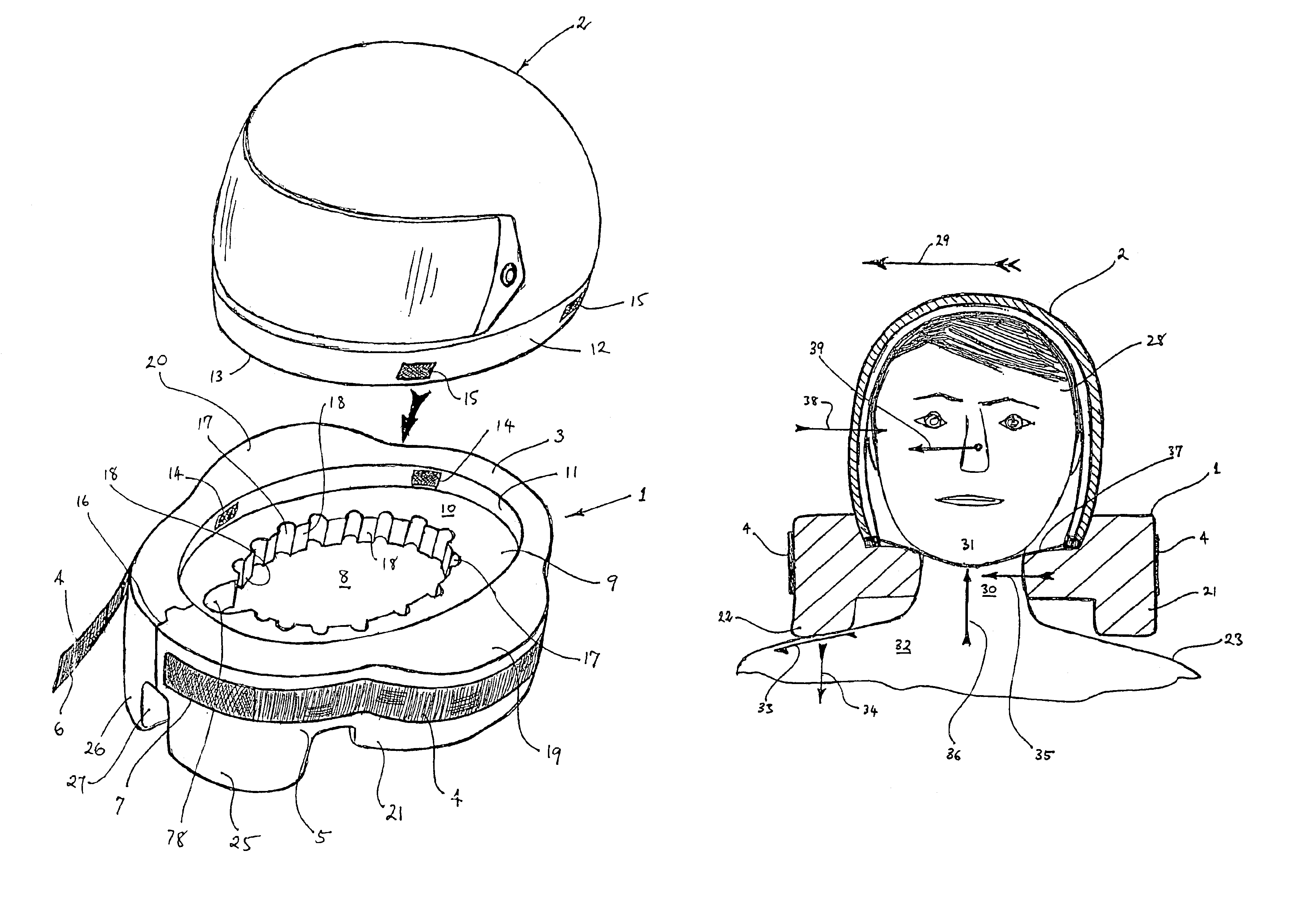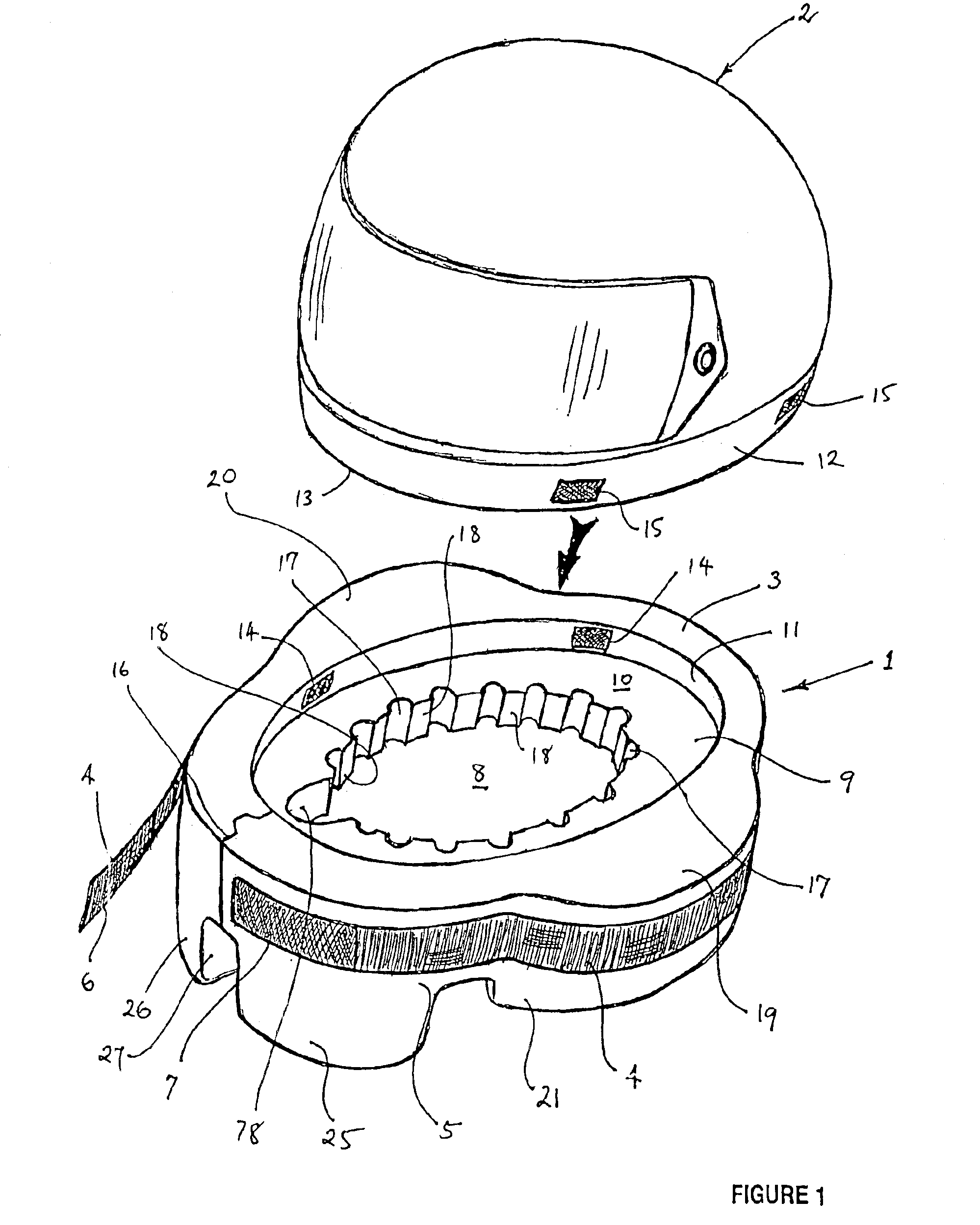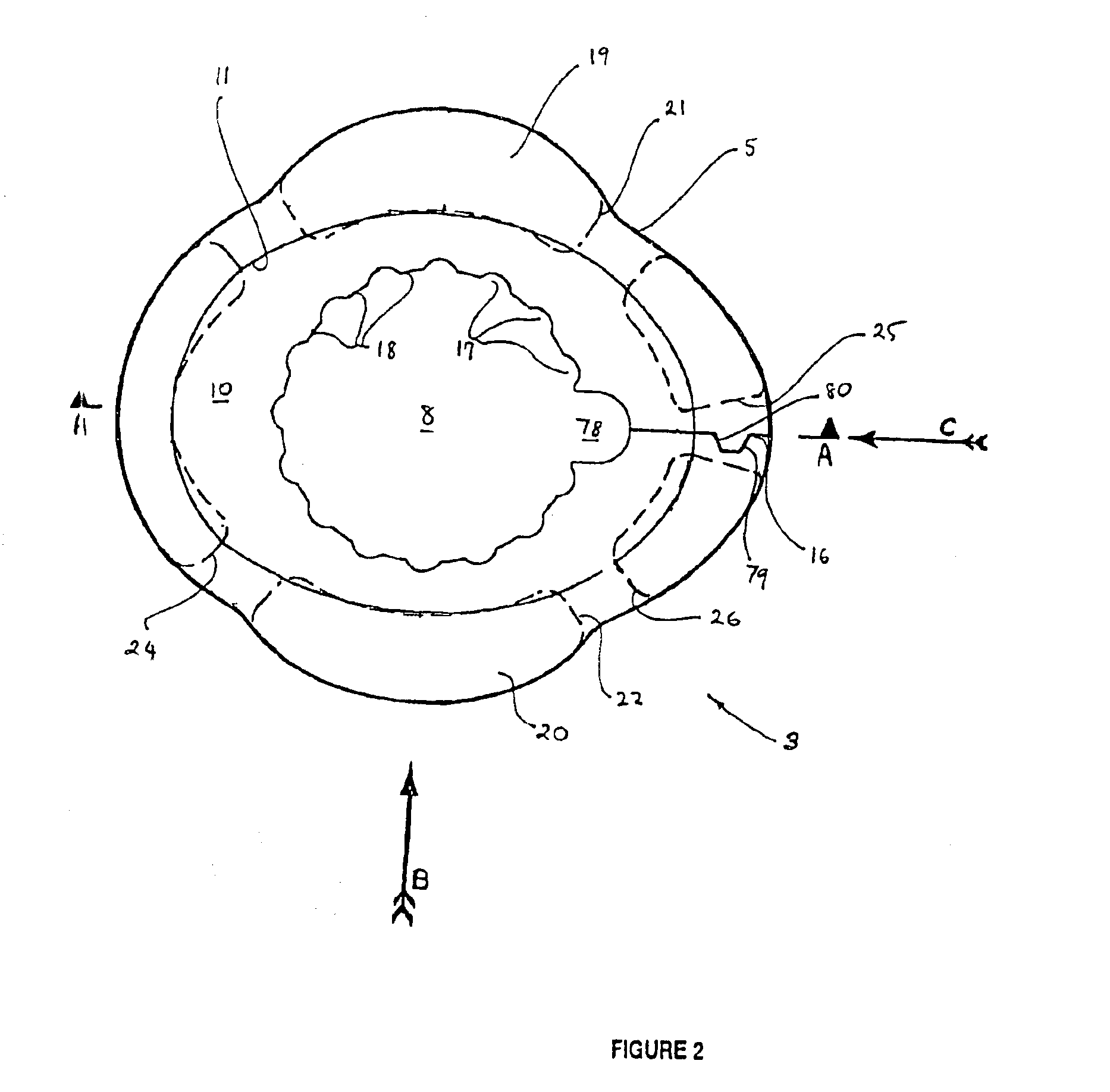Protective collar
a collar and protective technology, applied in the field of protective collars, can solve the problems of limiting the movement of helmets (and the head inside them), accidents, and injuries that may still be very severe, and achieve significant reinforcement or stiffening effect, facilitate the placement of the collar, and reduce the effect of injury
- Summary
- Abstract
- Description
- Claims
- Application Information
AI Technical Summary
Benefits of technology
Problems solved by technology
Method used
Image
Examples
Embodiment Construction
FIG. 1 shows a protective collar 1 according to the invention, together with a full-face crash helmet 2 with which collar 1 is used. Collar 1 includes as its main component a collar member 3 formed as a single piece of expanded plastics foam of suitable resilience and deformability. Collar 1 also includes a webbing strap 4. To one end of the strap 4 is secured a pad 6 which forms a first half of a loop-pile fastener of known type (available for example under the trade name “Velcro”). The strap 4 extends peripherally around, and is secured over most of its length by adhesive to, an external surface 5 of collar member 3. Secured to a second end of strap 4 is a pad 7 forming a second half of the loop-pile fastener.
Collar member 3 is generally ring-shaped, with a central opening 8 within a recess 9. Recess 9 is defined by a lower surface 10 and an inwardly-facing wall 11 upstanding from surface 10 and extending peripherally around collar member 3. Recess 9 is so shaped and sized that a ...
PUM
 Login to View More
Login to View More Abstract
Description
Claims
Application Information
 Login to View More
Login to View More - R&D
- Intellectual Property
- Life Sciences
- Materials
- Tech Scout
- Unparalleled Data Quality
- Higher Quality Content
- 60% Fewer Hallucinations
Browse by: Latest US Patents, China's latest patents, Technical Efficacy Thesaurus, Application Domain, Technology Topic, Popular Technical Reports.
© 2025 PatSnap. All rights reserved.Legal|Privacy policy|Modern Slavery Act Transparency Statement|Sitemap|About US| Contact US: help@patsnap.com



